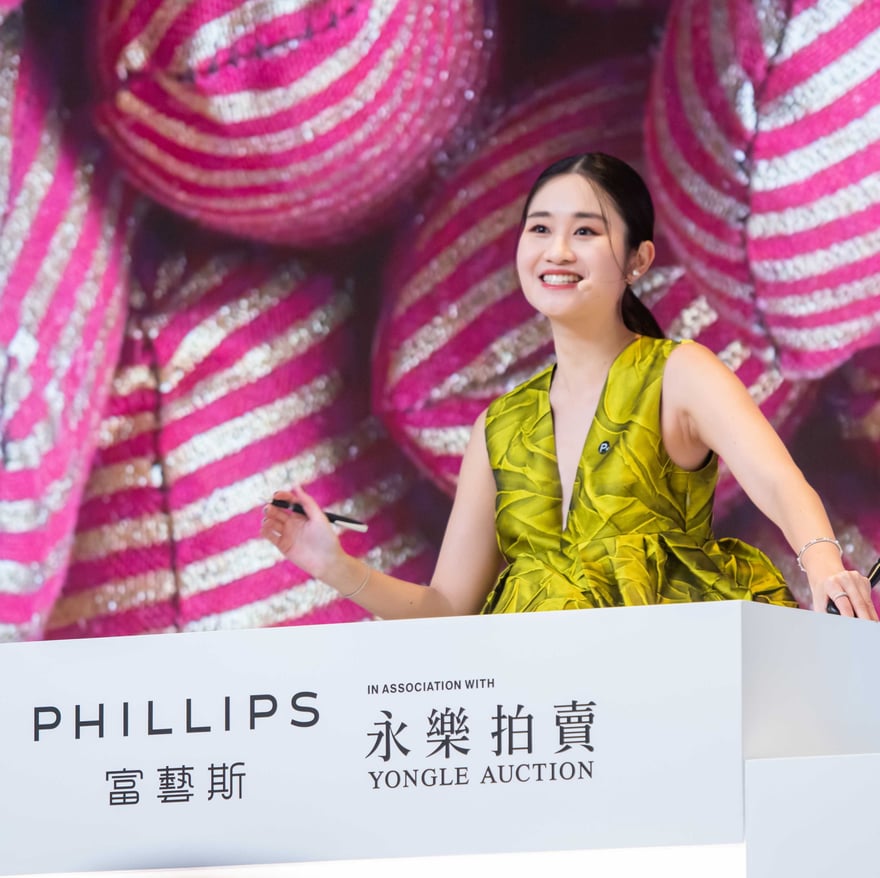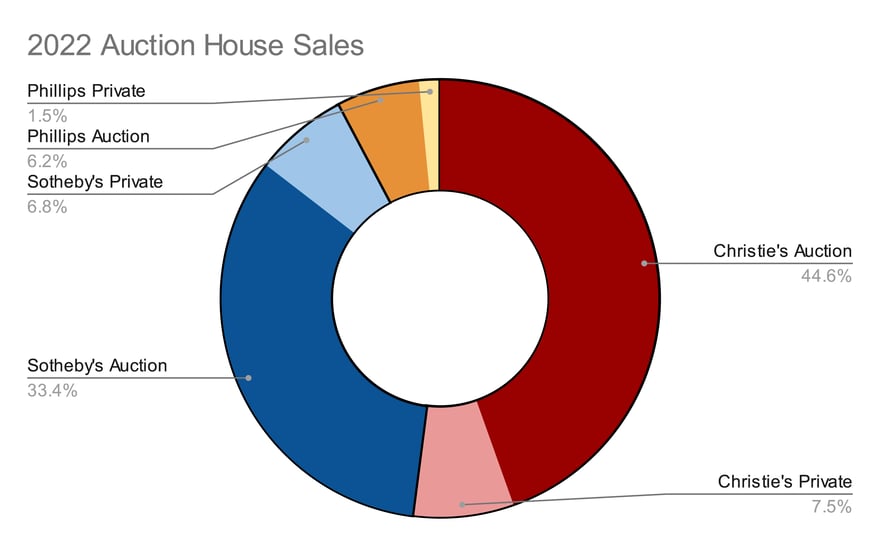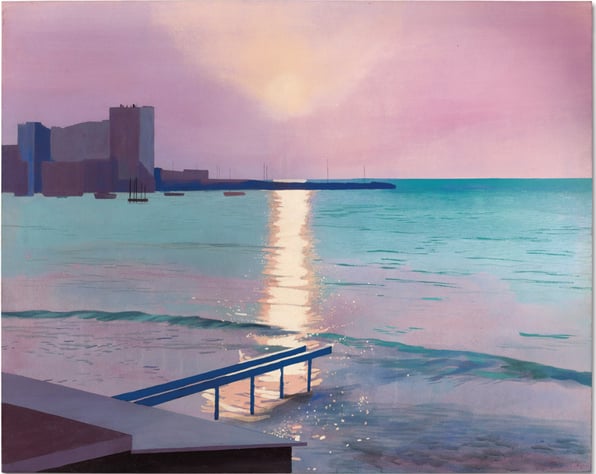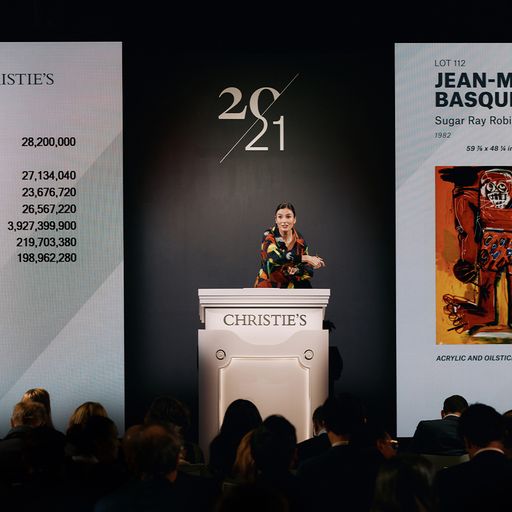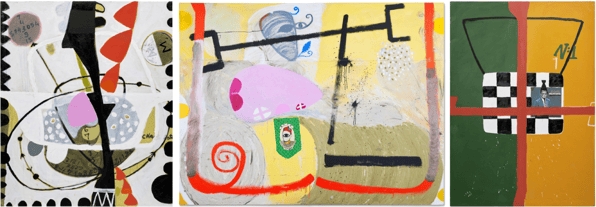What Happened in Hong Kong
Total: $193,101,858 with 88% sold (383/434 + 12 lots withdrawn)
Composition of Results: 39% above/ 45% within/ 15% below estimates
Aggregate Low Estimate: HKD 1,305,585,000
Aggregate Hammer: HKD 1,223,692,000
Hammer Ratio: 0.94
Average Lot Value: $504,182
What’s the Mood in Hong Kong? Art market observers have been talking about an impending slowdown or auction recession for so long, one can be excused for wondering why it hasn’t come yet. Now that it is here, the crack-up doesn’t quite look like expectations. The bad news from Hong Kong was that a full $35 million in low-estimated works were withdrawn or failed to find a buyer at the price the consignor demanded. That gave the sales a hammer ratio below 1 which is an indisputable sign of a pullback. But balance that against the fact that 39% of the lots that did well were bid above the estimates. Estimates themselves were often the problem. 60% of the top 25 lots by low estimate were sold below that estimate, bought in or withdrawn. Buyers are balking at the unrealistic demands of sellers. Although nearly 40% of the lots that sold were bid above estimates, those lots only represented 28.5% of the sales’ total value. That means bidders were chasing lower value lots. The average lot value for the sales was $504,182 but the median lot value for the works bid above the estimates was $161,436. The average for dynamic lots was $368,662. Finally, the hammer ratio for works bid above the estimates was 2.29, well above the 1.5 minimum. What does this all mean? The market is fading at the top but still quite strong at the five- and six-figure dollar level. Not quite what was expected to happen.
How Can We Know Whether the Weakness is in Asia or the West? With the advent of hybrid auctions, the art market has finally truly globalized. During the sales, Christie’s auctioneer called out online bids from Connecticut standing in a rostrum in Hong Kong. Following their successful collaboration with Poly Auction, Phillips partnered with Yongle to access mainland buyers for their sales this season. Whether that was the reason they held their nominal Evening sale at 4:30 in the afternoon, we don’t know. But the effect was to greatly limit participation from the US where bidders would have had to get up at 3:30 am on the East coast to bid. Comparing Christie’s Evening sale to Phillips is hardly a scientific test but the differences are suggestive. Phillips’s smaller Evening sale saw 53% the lots bid above the estimate range versus 40% at Christie’s. The lots at Phillips that were bid over estimates averaged around $500,000 versus a $1 million average at Christie’s for dynamic lots. That replicates the same market bias toward lower-priced lots.
Top 25 Artist Works Sold in Hong Kong by Premium Price
Who Were the Top Artists in Hong Kong? By a wide margin, Yayoi Kusama is the queen of the Asian market; $25,247,857 worth of her art was sold which accounted for 13.22% of the money spent in Hong Kong. Four of the 14 works that sold were bid above the estimates. Yoshitomo Nara had a little more than half of that number with $14,859,776 spent for 7.78% market share. Nine of a dozen works sold but only one above estimates. Zao Wou-ki sold $13.9 million worth of art for 7.29% market share. That number would have been closer to Kusama’s had the top lot priced at $10 million not been withdrawn. But that’s exactly the point in these results. The very top was weak. Gerhard Richter had one lot offered. It sold below the low estimate but still made the highest price of the entire week at $11.4 million. Joan Mitchell’s work was in the same boat. Her untitled painting made a compromise price of $10.6 million. That was the second highest price of the cycle and gave Mitchell 5.59% market share. Adrian Ghenie was the same story with a $7.2 million sale for a single work. Nicolas Party too had one work sell. This was for a record price of $6.6 million but the estimate was already poised to push the top limit of his market. Zeng Fanzhi had four works from different phases of his career sell. Only two saw significant bidding but the total of $5.8 million gave him 3.09% market share. Jean-Paul Riopelle was another member of the one-work-at-high-value club with aggressive bidding to $5.4 million or 2.85% market share. Finally, George Condo saw two works both sell below the estimates but for $4.9 million combined. That makes 5 of the top ten artists achieving their market share through the sale of a single very high value work.
Top 25 Works Sold in Hong Kong by Hammer Ratio
Which Artists Were Attracting the Bids? The sales in Hong Kong saw a number of previously popular artists continue to attract attention from bidders. Those artists include Andre Butzer who saw a hammer ratio of 1.69 on two works with a combined sale of $355,158. Ayako Rokkaku had six works sell for a combined hammer ratio of 1.6 and total sale of $1.4 million. Caroline Walker saw a 2.7 hammer ratio on two works that sold for almost $565,000 combined. Christine Ay Tjoe only saw two of three works offered sell but the combined hammer ratio (including the failed lot) was still a huge 5.65 for $2.09 million in sales. Edgar Plans continues to be popular in Asia with a combined hammer ratio of 1.7 on four works that sold for $734.082. Genieve Figgis’s two works made $355,011 with a hammer ratio of 1.57. Hilary Pecis saw two works sell for $839,097 combined and a hammer ratio of 1.7. Four works by Huang Yuxing sold for $2.26 million and a hammer ratio of more than 3.0. One of the works set a new record price for a single canvas by Huang. Jia Ali saw sales of two works for a combined $1.09 million and a hammer ratio above 2.1. Although the numbers were small at $100,052 for Jordi Ribes’s two works, the hammer ratio was not at 1.77. Vietnamese modernist Le Pho had seven works sell for $1.69 million and a combined hammer ratio of 2.39. Mayuka Yamamoto had one lot withdrawn of the three offered but the other two more than made up for it to hit a 2.66 hammer ratio and $387,311 in sales. Those two works were her second and third highest prices at auction. Roby Dwi Antono sold all five works on offer for a hammer ratio of 1.95 and total sale of $340,516. Scott Kahn’s five works were sold for a 2.54 hammer ratio and a total of $1.85 million. The top lot was his second highest price eclipsing an earlier record (and the artist’s first auction sale) set exactly a year before to the day. Another artist with a very strong hammer ratio on admittedly small sales was Sarah Slappey whose two works totaled $206,637 but had a 3.36 hammer ratio. Tadanori Yokoo had five works sell for $263,701 and a combined hammer ratio of 1.8. Thai painter Thawan Duchanee saw three works sell for a combined hammer ratio of 2.08 and sales of $648,972, including the 2nd highest price paid for a work at auction. William Monk only had two works sell but they combined for a 2.52 hammer ratio and $374,492 which included a significant new auction record for his work at $322,872. Yuichi Hirako’s three works had a combined hammer ratio of 4.0 on sales of $419,684. Zhang Yingnan’s two empty interiors made a combined $250,151, including a new record price at $153,364, and a hammer ratio of 4.69.
